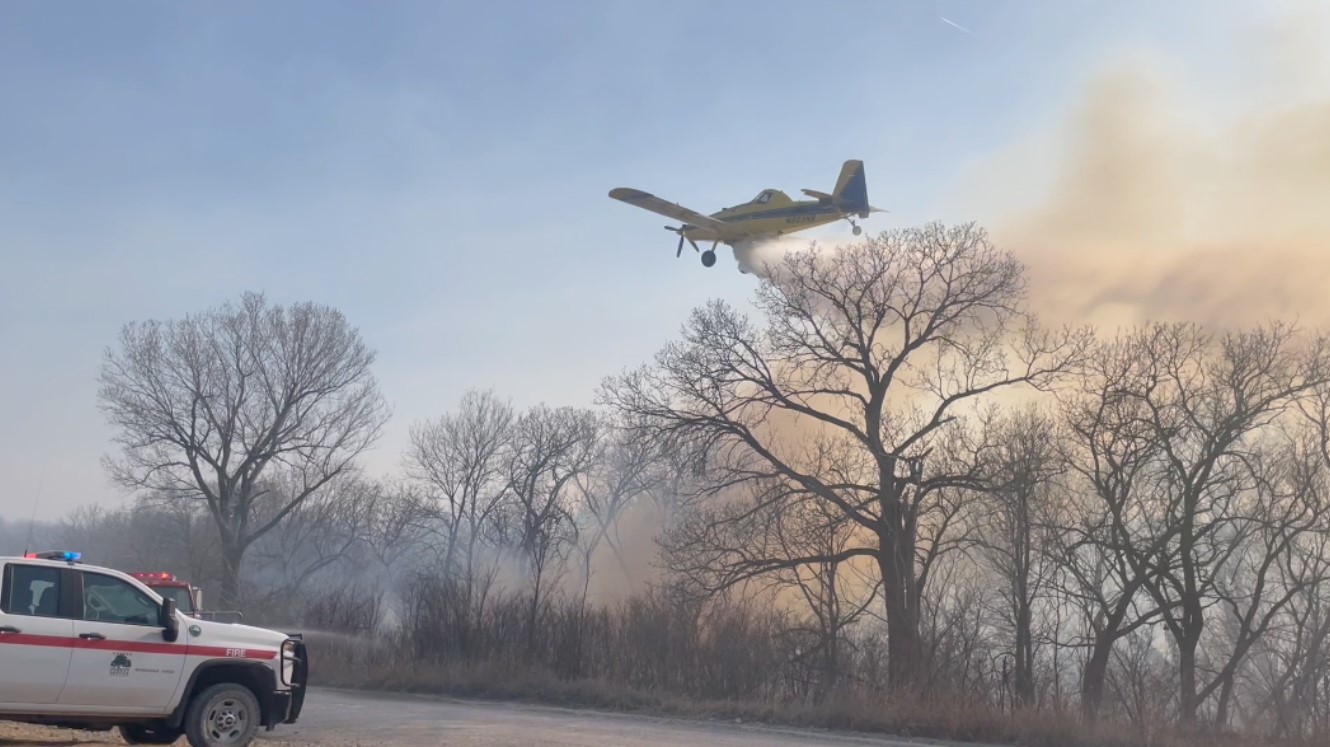The Kansas Forest Service focuses on specific fire hazards from old power lines to obnoxious juniper trees.
As Kansas gradually shifts from rolling grasslands to shrub woodlands, what used to be a wildfire season now stretches year round.
Along with the usual suspects of weather changes and high winds, there’s a new fire starter: juniper trees.
These trees are a rapidly spreading species that are highly flammable. Fire authorities are educating farmers and rural residents about the dangers of having too many junipers, hoping to cut back on the infestation.
The Kansas government is attempting to improve power lines, as small rural power lines are often the cause of wildfires. Task forces are also being put in place to educate rural landowners on preventative measures they can take to protect their property.
“One thing folks can do, if they’re looking at a new roof or something for their house, non-combustible shingles are a big deal,” said Aaron Williams, Kansas Forest Service fire management officer for the southwest district. “Beyond that, look at landscaping around the house. We generally like to see three to five feet of separation from anything that’s flammable.”
Kansas Forest Service
KFS, which is an independent agency within K-State Research and Extension, educates the rural public on fire prevention tactics and supplies firefighters with wildfire-specific training and aviation assistance.
Janie Dunstan, a Kansas volunteer firefighter, says, “We work with Kansas Forest Service when we need aviation to come drop water in places we can’t get to. On big fires, they also have task forces that can come help us out or run the scene to give us a much-needed break. They provide great services for the whole state. Not only do they come in and help when there’s a fire, but they provide training for fire departments and information to the public to make people aware of how to prepare around their homes, so they aren’t a fire hazard.”
Beyond fire safety, they also provide Kansas with many other forest services:
- Protect foliage and trees
- Control invasive species
- Implement the conservation seedling program
- Distribute pollinator bundles made of native tree and shrub species that provide habitat for insects and birds
Thanks to the Kansas Forest Service and Kansas fire departments (80% of which are volunteer-based), wildfires are becoming less threatening to our livelihood, the rural public is more informed and we have a real chance at turning back the burning tide.
By Kate Ellwood
